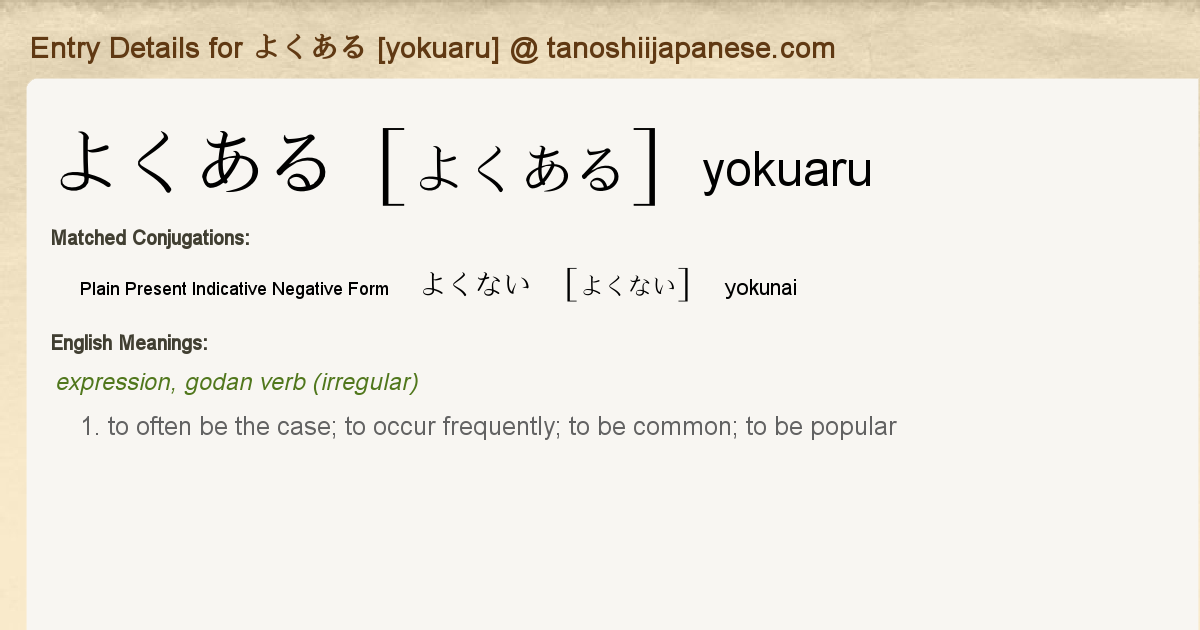
 Kotoshi no natsu wa itsumo yorimo atsukatta. I studied hard everyday, therefore, I am now able to speak Japanese fluently. Dakara, nihongo ga ryuuchou ni hanaseruyouni narimasita. According to the weather forecast, it’s going to be heavy rain today, so I decided to study at home today. Sokode, kyou wa ie de benkyou wo suru kotonishita. Tenkiyohou ni yoruto, kyou wa ooame no youda. そこで (sokode) and したがって (shitagatte) appear more regularly in formal or academic situations. People use だから (dakara) commonly in small talk. したがって (shitagatte) – thus, therefore, in this way. それで (sorede) – and, and then, therewith. だから (dakara) – so, therefore, consequently. そのため (sonotame) – so, therefore, for that reason, consequently. Here’s a list of resultative Japanese conjunctions: They imply a natural result or a conclusion that follows what was presented earlier. Resultative conjunctions are namedじゅんせつ (junsetsu | 順接) in Japanese grammar. Here is the list of Japanese conjunction words in Hiragana (in Romaji). Let’s learn Japanese words with simple translations and example sentences. I’m going to introduce you to some of the most common conjunction words in Japanese. I bought a Japanese book, but I couldn’t read it because there were many kanji. Nihongo no hon wo katta noni, kanji ga ooku te yomenakatta. I’m hungry, so I’m going to have a snack. Let’s take a few examples of sentences using Japanese conjunctive particles along with an adjective and a verb. These are the common Japanese conjuctive particles: However, they’re always together with conjugational words verb, adjective, adjectival noun, and auxiliary verb. They act as a connector and look similar to conjunction.
Kotoshi no natsu wa itsumo yorimo atsukatta. I studied hard everyday, therefore, I am now able to speak Japanese fluently. Dakara, nihongo ga ryuuchou ni hanaseruyouni narimasita. According to the weather forecast, it’s going to be heavy rain today, so I decided to study at home today. Sokode, kyou wa ie de benkyou wo suru kotonishita. Tenkiyohou ni yoruto, kyou wa ooame no youda. そこで (sokode) and したがって (shitagatte) appear more regularly in formal or academic situations. People use だから (dakara) commonly in small talk. したがって (shitagatte) – thus, therefore, in this way. それで (sorede) – and, and then, therewith. だから (dakara) – so, therefore, consequently. そのため (sonotame) – so, therefore, for that reason, consequently. Here’s a list of resultative Japanese conjunctions: They imply a natural result or a conclusion that follows what was presented earlier. Resultative conjunctions are namedじゅんせつ (junsetsu | 順接) in Japanese grammar. Here is the list of Japanese conjunction words in Hiragana (in Romaji). Let’s learn Japanese words with simple translations and example sentences. I’m going to introduce you to some of the most common conjunction words in Japanese. I bought a Japanese book, but I couldn’t read it because there were many kanji. Nihongo no hon wo katta noni, kanji ga ooku te yomenakatta. I’m hungry, so I’m going to have a snack. Let’s take a few examples of sentences using Japanese conjunctive particles along with an adjective and a verb. These are the common Japanese conjuctive particles: However, they’re always together with conjugational words verb, adjective, adjectival noun, and auxiliary verb. They act as a connector and look similar to conjunction. 
Japanese conjunctive particles are called せつぞくじょし (setsuzokujoshi |接続助詞). Don’t get scared with informal and formal Japanese conjunction words.Some have similar concept to English conjunctive adverbs.Better not mix up with Japanese conjunctive particles.Here are the basic rules of Japanese conjunctions you need to know:

It’s time to learn Japanese grammar and its usage. In this lesson, we’re focusing on the most common Japanese conjunction words せつぞくし(setsuzokushi | 接続詞). Japanese conjunctions have a different variety from English and function in a slightly different way, but what they actually can do is quite similar. In English, it’s said that we have three basic conjunctions coordinating, subordinating, and correlative conjunctions. As you can expect, the most common English conjunction words are “and,” “or,” and “but.” Now, you’re probably aware of how important conjunctions are in our daily conversation. Conjunctions connect words, phrases, clauses, and two sentences. 5 Conjunctions Make Daily Conversations More EnjoyableĬonjunctions are called sentence connectors.4.8 Supplementary Japanese Conjunctions.4.2 Contradictory Japanese Conjunctions.3.1 Common Japanese Conjunctive Particles:.







 0 kommentar(er)
0 kommentar(er)
